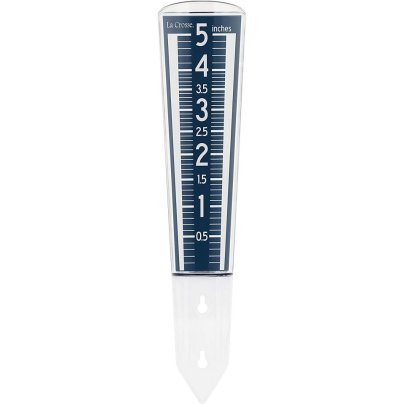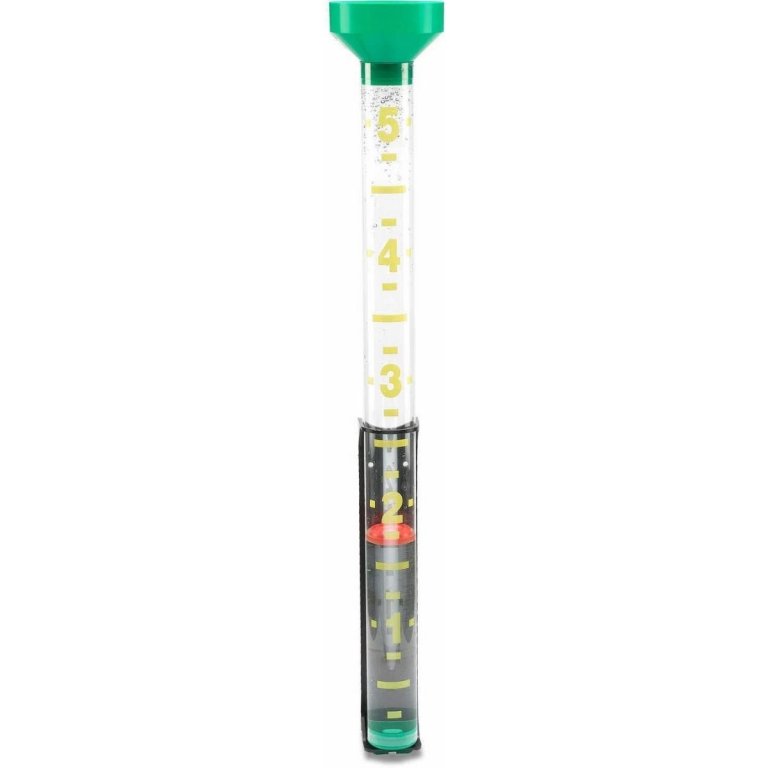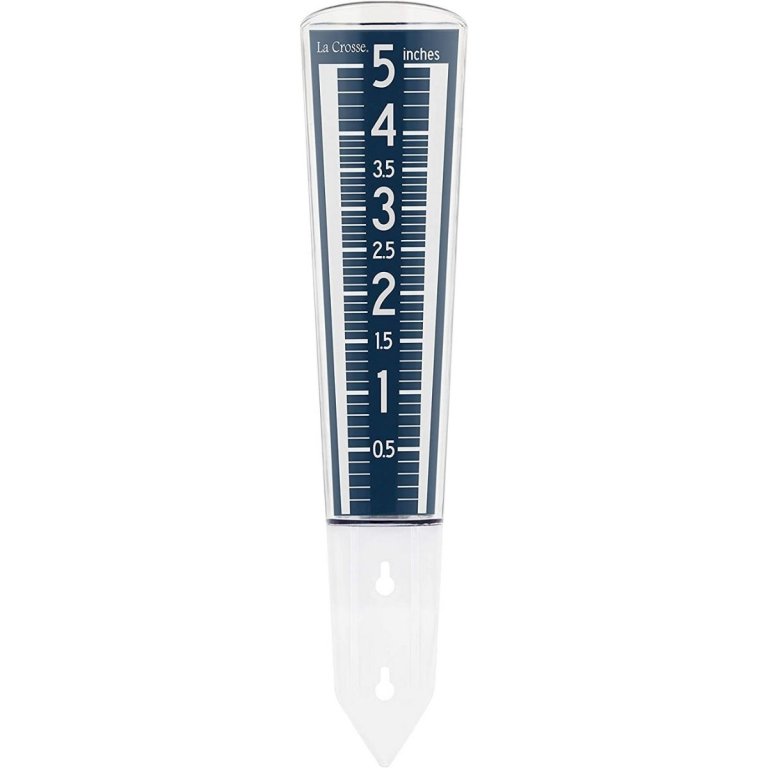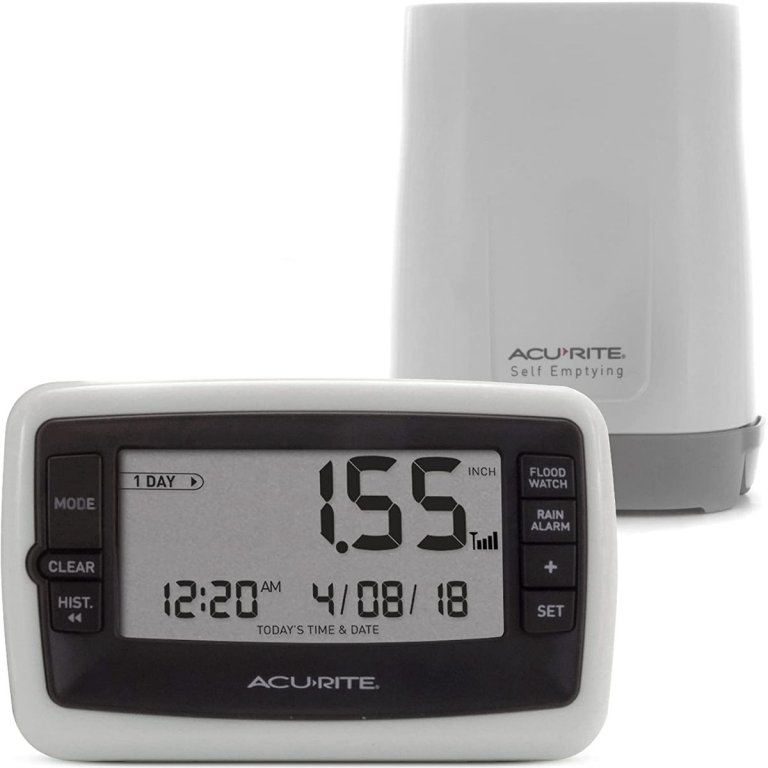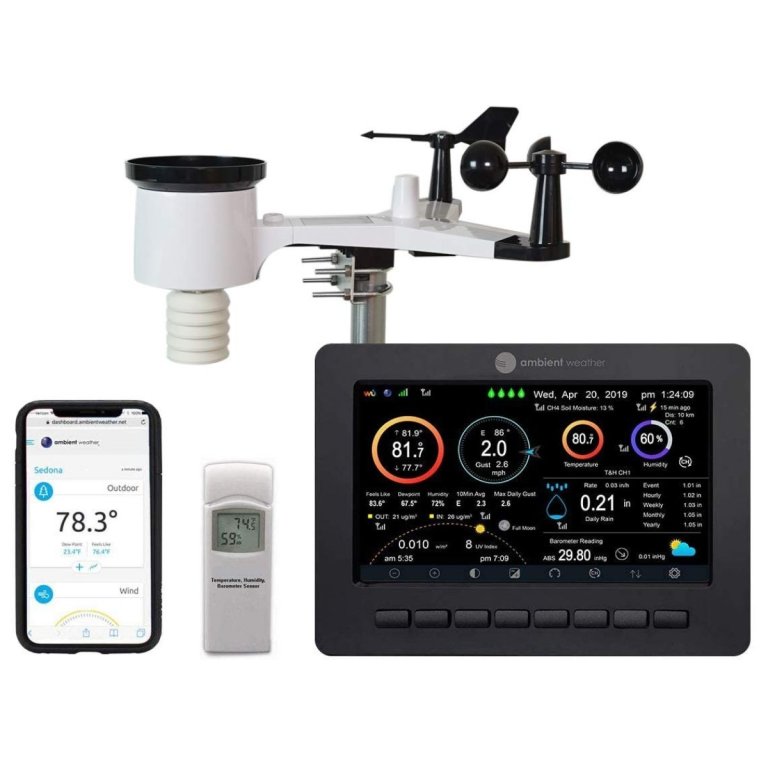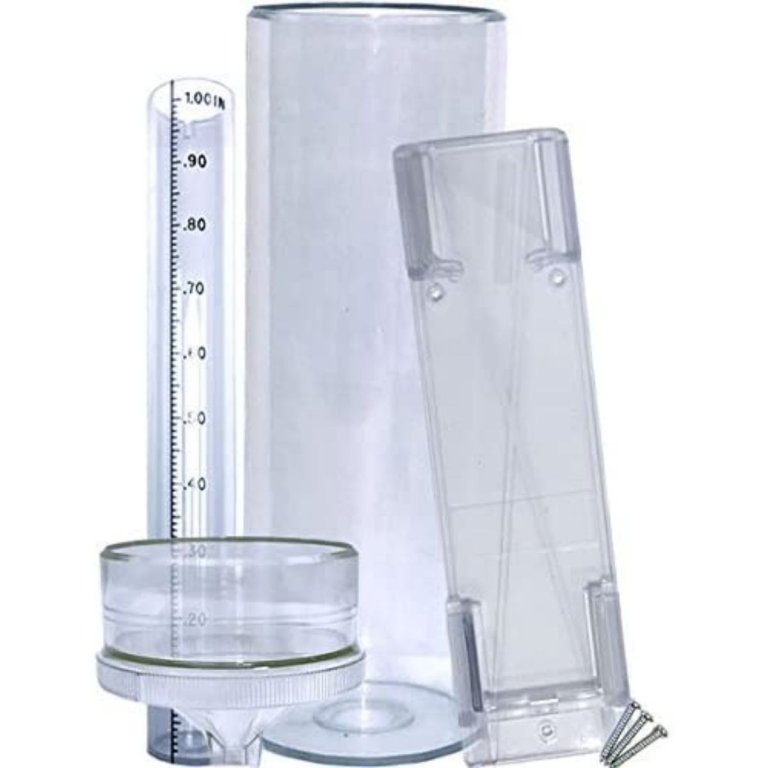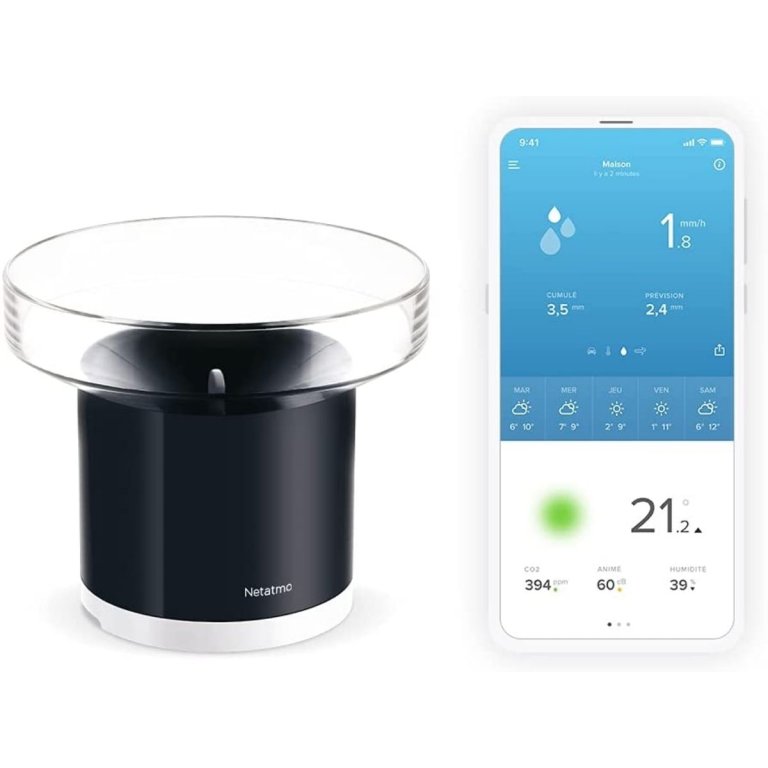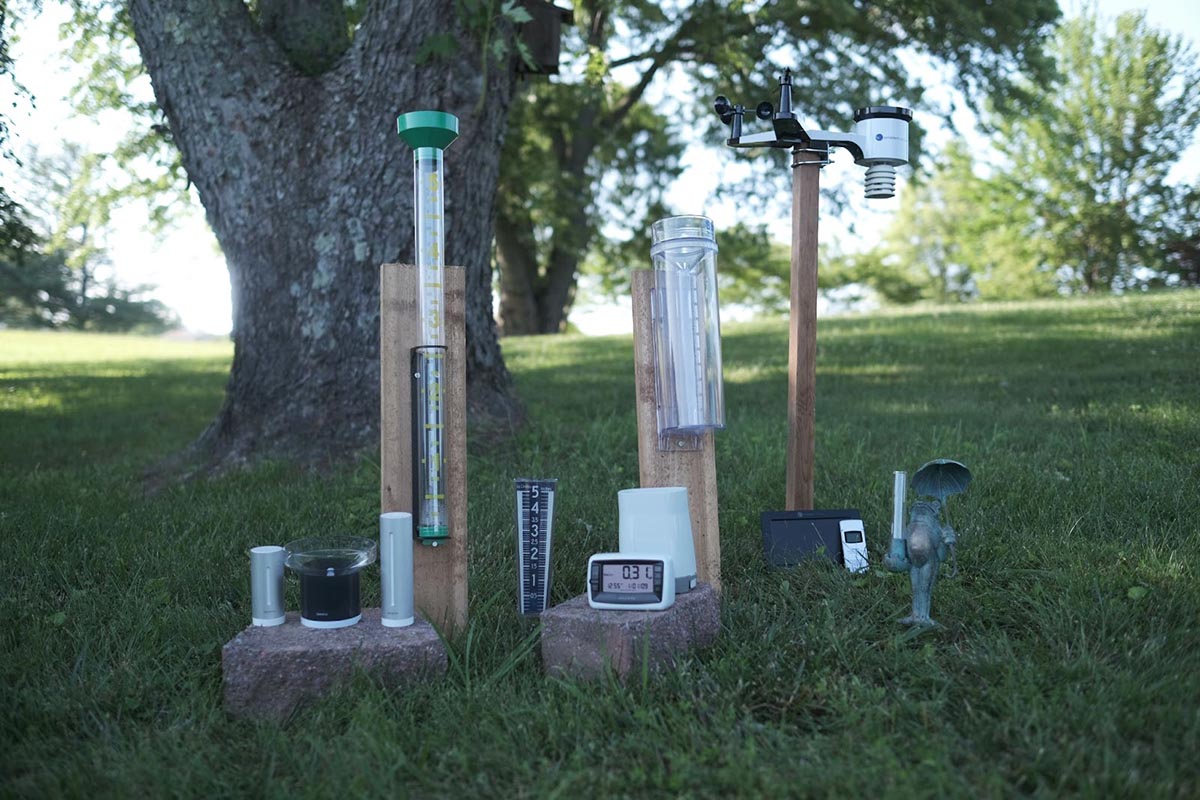
We may earn revenue from the products available on this page and participate in affiliate programs. Learn More ›
Initially used by weather stations and now by gardeners, farmers, and weather enthusiasts alike, rain gauges collect rain into a funnel to measure precipitation, saving users time, energy, and money. By knowing how much rain the area receives over an average week, month, or year, you can plan when to water your plants or to prepare for storms.
With so many different models available on the market, finding the best rain gauge for your needs can feel overwhelming. To give you a head start, read on to learn about shopping considerations and why the following rain gauges are top performers. Our favorite model is the Headwind Classic EZRead Rain Gauge, which is easy to read, weather-resistant, and included a built-in screen to keep out debris. We’ve tested each of the products below to assess their accuracy, features, and durability when measuring precipitation, to provide you with our top recommendations for the best rain gauges on the market.
- BEST OVERALL: Headwind Classic EZRead Rain Gauge
Jump to Review - BEST BANG FOR THE BUCK: La Crosse 704-1531B Magnifying Rain Gauge
Jump to Review - BEST WIRELESS: AcuRite Digital Rain Gauge with Rain Collector
Jump to Review - BEST WEATHER STATION: Ambient Weather WS-2000 Smart Weather Station
Jump to Review - BEST FOR RAIN AND SNOW: Stratus RG200 Precision Rain and Snow Gauge
Jump to Review - BEST DECORATIVE: Evergreen Garden Metal Frog Statue with Rain Gauge
Jump to Review - BEST RAIN APP: Netatmo Smart Weather Station Rain Gauge
Jump to Review
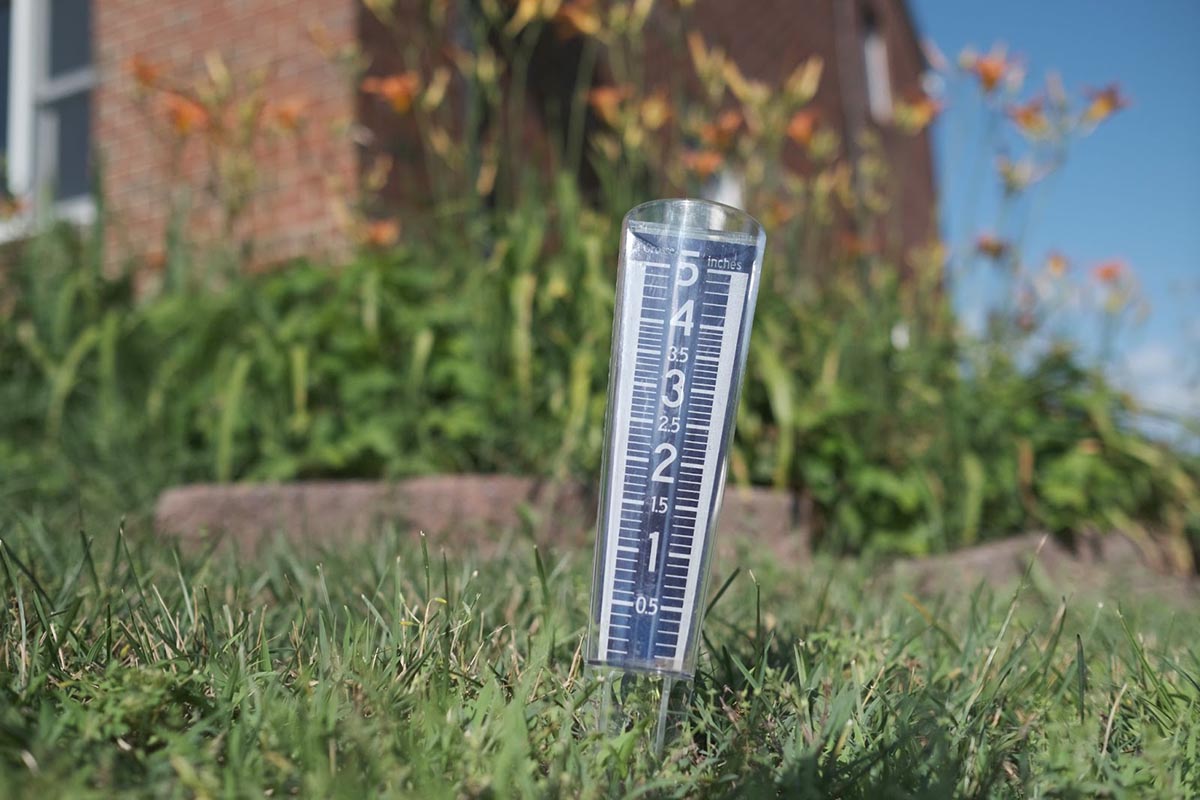
How We Tested the Best Rain Gauges
Each rain gauge was scored using a rubric, which helped us compare different rain gauges based on accuracy, ease of installation, size, durability, readability, additional features, and value for the price.
In addition to noting how easy the product was to set up and install, we also evaluated the included instructions, whether or not batteries were included (if needed), and if the product came with mounting hardware or multiple installation options.
The rain gauges were tested in both light and heavy rain conditions to determine their accuracy and the effectiveness of any additional features, such as measuring humidity, wind speed, air pressure, and more.
| Testing Stats | |
| Products tested | 7 |
| Time spent testing | 3 days |
| Tests performed | 4 to 6 |
| Price range | $10 to $300 |
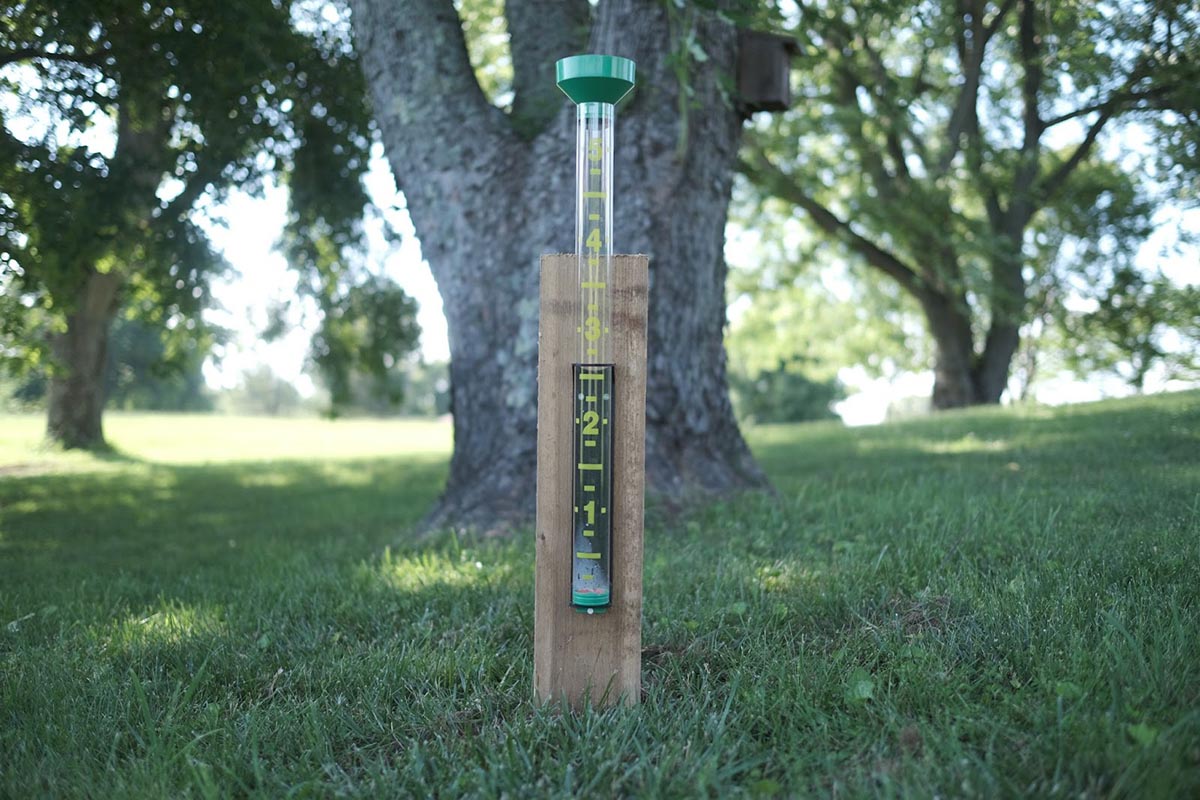
Our Top Picks
Below are some of the best rain gauges that stand out for their quality, ease of use, accuracy, and versatility. We tested each of these products to compare them against each other and to find out which is best for different situations.
Best Overall
Headwind Classic EZRead Rain Gauge
What We Like
- Measures up to 5 inches of rainfall
- Built-in screen to keep out debris
- Easy to read from far away
- Weather-resistant
What We Don’t Like
- Requires wall or post mounting
- Does not come with mounting hardware
- Not freezeproof
Product Specs
- Type: Analog
- Size: 26 inches long, 4 inches in diameter
- Ease of installation: Moderate
Our Ratings: Setup 5/5; Ease of Use 5/5; Accuracy 4/5; Durability 4/5; Value 3.5/5
The EZRead Rain Gauge by Headwind is an analog model featuring an oversize design. Standing tall at 26 inches and with a diameter of 4 inches, it can measure up to 5 inches of rainfall. Its funnel top prevents debris such as leaves from clogging the rainwater collector.
The markings on this garden rain gauge are large and visible at ¼-inch intervals. With the additional float and water-level magnification feature, users can read the markings from up to 50 feet away. Its bright yellow-and-green design is fun and highly visible in most weather.
The EZRead is designed to withstand excessive heat, high winds, and heavy rain alike. However, it is not freeze-resistant, so be sure not to leave it outside in the cold. Thanks to its plastic hanger, the device is easy to install on a range of surfaces.
When we tested this model, it was simple to mount to a post. The bottom contains a peg feature to keep the gauge securely in place when in the bracket, yet removing the gauge from the bracket to empty it is also simple. The built-in funnel, which has a screen to keep out debris, is an excellent feature for homes that have a lot of trees.
Its sizable construction means users don’t have to empty the rain gauge frequently, and its large numbers also make it easy to read from a porch, balcony, or window. We loved the simplicity, effectiveness, and durability of this design. However, a staking option would have made it even more versatile.
Get the Headwind rain gauge at Amazon.
Best Bang for the Buck
La Crosse 704-1531B Magnifying Rain Gauge
What We Like
- Easy to read
- Keyhole brackets and a built-in stake for ground- or wall-mounting
- Weather-resistant
- Comes in multiple colorways
What We Don’t Like
- No mounting screws included
- Not freeze-resistant
Product Specs
- Type: Analog
- Size: 12 inches tall, 2¾ inches wide
- Ease of installation: Easy
Our Ratings: Setup 5/5; Ease of Use 4.5/5; Accuracy 5/5; Durability 4/5; Value 4.5/5
With this magnifying analog model by La Crosse, there’s no need to break the bank to get a functional rain gauge for the backyard or garden. The compact device is 12 inches tall and 2¾ inches wide, capable of measuring up to 5 inches of rain.
The magnifying acrylic funnel features large numbers that are easy to read, even from a distance. The funnel is removable for cleaning and emptying. Keyhole brackets make the device easy to mount on a post or a fence, while a pointy bottom allows for planting it into the ground.
The La Crosse rain gauge is designed to withstand heavy rain and wind but not freezing temperatures. It’s available in three color choices: black-blue, navy blue, and burgundy red.
When testing the La Crosse rain gauge, we appreciated the design flexibility, which allows for pole, wall, or even fence mounting as well as a stake to stick into the ground. We ended up staking the gauge in the garden, and it was very simple to install and use.
However, if planning to wall- or pole-mount the gauge, keep in mind that while the product has mounting holes, it does not come with mounting hardware. The large numbers make it easy to read, and it comes in half measurements up to 4 inches.
Get the LaCrosse rain gauge at Amazon.
Best Wireless
AcuRite Digital Rain Gauge with Rain Collector
What We Like
- Rainfall and flood-watch alarm
- Reports every 60 seconds
- LED display
- Self-emptying
- Does not require an app or website to use
What We Don’t Like
- Not UV- or heat-resistant
- LED display controls can be confusing
- Does not come with the 5 AA batteries required
- Gauge can tip over
Product Specs
- Type: Digital
- Size: Unlimited
- Ease of installation: Easy
Our Ratings: Setup 5/5; Ease of Use 4.5/5; Accuracy 5/5; Durability 4/5; Value 4/5
This digital and wireless model by AcuRite is easy to set up and does nearly all the work. A rainfall alarm lets users know when it starts to rain, and rain totals get transmitted every 60 seconds to the easy-to-read LCD display.
The indoor unit provides all data and measurements in both inches and millimeters for the current rain event, current day, last 7 days, plus two other customizable totals. A flood-watch alarm also lets users know if conditions may lead to flooding. It is also self-emptying.
Its signal is strong enough to transmit up to 100 feet away, which provides reasonable freedom with positioning the outdoor component. Once mounted, it is designed to stay securely in place through the elements. However, this model may not withstand excessive heat or too much direct sun exposure, so choose its location carefully.
When testing the AcuRite Digital Rain Gauge, we were impressed with how simple it was to set up and start. The only downside was that it needed five AA batteries, which were not included. After installing the batteries, the gauge was ready to go. However, figuring out all the controls on the display took a bit of time and was more confusing than we felt was necessary.
In addition, the rain gauge is freestanding, which means it’s prone to tipping in very windy conditions. However, we tested the gauge on a windy, rainy day, and it did not tip over. It comes with screws for mounting for security, but we did not install it this way. Its self-emptying feature makes it easy to use and measure rainfall accurately.
Get the AcuRite rain gauge at Amazon or The Home Depot.
Best Weather Station
Ambient Weather WS-2000 Smart Weather Station
What We Like
- Provides ample weather data
- Smart-home compatible
- Solar-powered
- Display is large and easy to read
What We Don’t Like
- Expensive
- Required mounting pole is not included
- Backup batteries not included
- Instructions were confusing
Product Specs
- Type: Digital
- Size: Unlimited
- Ease of installation: Moderate
Our Ratings: Setup 3/5; Ease of Use 4.5/5; Accuracy 5/5; Durability 4/5; Value 4/5
The high-tech Ambient Weather WS-2000 Smart Weather Station offers full-color TFT LCD display, 300-foot wireless transmission, and encrypted Wi-Fi connectivity.
With this weather station, get real-time updates in both imperial and metric units of measure. This model is not limited to rainfall measurements; it provides an array of other important weather-related data as well.
An all-in-one integrated sensor measures wind speed and direction, temperature, humidity, and rainfall as well as UV and solar radiation. Users can add optional detectors for lightning, air quality, and humidity. Users of this weather station can even place sensors indoors for data on the temperature and humidity in the house or office.
Connect to the Ambient Weather Network via the website or through the app to access dials, gauges, graphs, and text reports. It is compatible with Alexa and Google Assistant for easy voice-activated weather reports. The sensor is solar-powered, although two AA batteries (not included) are recommended for backup power.
When testing the Ambient Weather Network, we had to take more time to set it up than we felt was necessary, and the instructions were not very helpful. However, once it was set up, it was relatively easy to use. The station did not come with a mounting pole, which is required for the station to work, so we had to find one. The station does have an adjustable bracket for the pole, so varying sizes of poles could be used, which makes the installation a bit easier.
The display was large, easy to read, and included information about both indoor and outdoor conditions. It also contained information about moon phases, wind speed, air pressure, UV index, and “Feels Like” temperature. The only downside to the display is that it does have to be plugged in to work, which gives it less flexibility when placing it in the house. However, we did connect via the app to check in on weather conditions, which made this weather station helpful to use when away from the display or the house.
Get the Ambient weather station at Amazon.
Best for Rain and Snow
Stratus RG200 Precision Rain and Snow Gauge
What We Like
- Measures up to 11 inches
- Overflow container design is convenient
- Optional wall or pole mounting with hardware included
- Weather-resistant
What We Don’t Like
- No measurement on the outer tube
- Mounting pole not included
- Bracket was tricky to get on the tube
Product Specs
- Type: Analog
- Size: 14.5 inches tall, 5 inches wide
- Ease of installation: Moderate
Our Ratings: Setup 4/5; Ease of Use 3.5/5; Accuracy 4/5; Durability 4/5; Value 3/5
The Stratus RG200 Professional Rain and Snow Gauge provides some of the most precise measurements among analog models. It is 14.5 inches tall and 5 inches wide, allowing it to measure up to 11 inches of rain or snow.
It comes with an inner measuring tube with a 1-inch capacity, graduated to 1/100 of an inch for extra precision. When rainfall exceeds 1 inch, the extra water simply flows into the larger outer cylinder. The funnel and inner cylinder are removable for ease of reading and cleaning. With its “Quick Connect” bracket, the device is easy to install on most mounts or structures.
This rain and snow gauge was manufactured in accordance with United States Weather Bureau specifications. It contains heavy-duty, UV-resistant polycarbonate, allowing the gauge to withstand rough weather and direct sun exposure without fading or corroding.
When testing the Stratus rain gauge, we loved that hardware was included, so it was relatively easy to install (however, a mounting post was not included with the product and a drill was required to install the screws). There’s also the option to leave the container freestanding, but it could tip over in windy conditions as a result of its plastic construction.
The overflow design and sizable container are convenient so emptying the gauge frequently is not necessary. Easy to assemble and use, this rain gauge has some unique features for the price. Its clear color also makes it inconspicuous for both home and yard use.
Get the Stratus snow and rain gauge at Amazon.
Best Decorative
Evergreen Garden Metal Frog Statue with Rain Gauge
What We Like
- Collects up to 5 inches of rain
- Attached spike for placing
- Inch and centimeter measurements included
- Rain gauge is removable for easy reading
- Small enough to go in a flower pot
What We Don’t Like
- Spike is not removable
- Material is prone to rusting
- Glass rain gauge is fragile
Product Specs
- Type: Analog
- Size: 18 inches tall, 4 inches wide
- Ease of installation: Easy
Our Ratings: Setup 5/5; Ease of Use 3.5/5; Accuracy 5/5; Durability 4/5; Value 4.5/5
With this fun frog statue and rain gauge by Evergreen Garden, users don’t have to choose between aesthetic and utility for the garden: This offers the best of both worlds.
It’s made of metal, polystone, and glass, allowing it to withstand heavy rain and wind. Its antique rust finish is charming while also serving to camouflage any potential corrosion. For additional stability, a sturdy ground spike is located under the frog’s feet.
This decorative rain gauge is 18 inches tall and 4 inches wide. The frog statue is much larger than the rain gauge tube, making it an attractive mix of garden decor and function. It collects up to 5 inches of rain, offering measurements in both inches and centimeters. The rain gauge provides basic rainfall information to benefit most gardeners, while the statue adds whimsical beauty.
When testing this rain gauge, we found it was incredibly easy to set up and install. Thanks to its attached stake, it can be placed just about anywhere in the ground to measure rainfall. It’s small enough so that it won’t take over the garden decor yet visible enough to see when measuring rain. As an added bonus, the glass rain gauge is removable, so it’s easy to see close-up and to measure precipitation.
Get the Evergreen frog statue rain gauge at Amazon or Wayfair.
Best Rain App
Netatmo Smart Weather Station Rain Gauge
What We Like
- Smart-home compatible
- Real-time readings and alerts
- Batteries included
- Comes with app for monitoring
What We Don’t Like
- Somewhat difficult to set up
- Main unit needs to be plugged in to work
- iOS 9 minimum required
Product Specs
- Type: Digital
- Size: Unlimited
- Ease of installation: Moderate
Our Ratings: Setup 3/5; Ease of Use 4.5/5; Accuracy 5/5; Durability 3/5; Value 4/5
This smart rain gauge is an accessory of the Netatmo Smart Weather Station, which must be purchased separately and used with the rain gauge in order for the product to work. Its best feature is certainly its app, available on iOS, Android, PC, and Mac.
It provides real-time readings of rainfall as well as data history to track changes over time. Users get a rainfall alert on a connected smartphone as soon as it starts raining, and they can customize alerts for information on cumulative quantities.
The rain gauge can be installed up to 300 feet away from the weather station’s indoor module. It is highly resistant to rough weather and is powered by two AAA batteries, which are included with the product. It is compatible with Alexa and can connect with other smart-home devices, including sprinklers, which the gauge can shut off as soon as it starts raining.
Although the app had some initial difficulty connecting while we were testing this product, it did connect with the Smart Home Weather Station and the Smart Indoor Module, one of which is included with the weather station, as well as the rain gauge to provide readings on both the inside and outside environment. There is the option to purchase more modules to place in different rooms in a home.
The app provides a wealth of information, including exterior noise, humidity, air pressure, dew point, and, of course, precipitation. The Smart Indoor Module provides information on noise, humidity, carbon dioxide levels, and temperature. The rain gauge itself was simple to connect to the weather station and place outdoors to measure rainfall, and it provided accurate readings.
Get the Netatmo rain gauge at Amazon, The Home Depot, or the Home Weather Station on Amazon.
Jump to Our Top Picks
What to Consider When Choosing a Rain Gauge
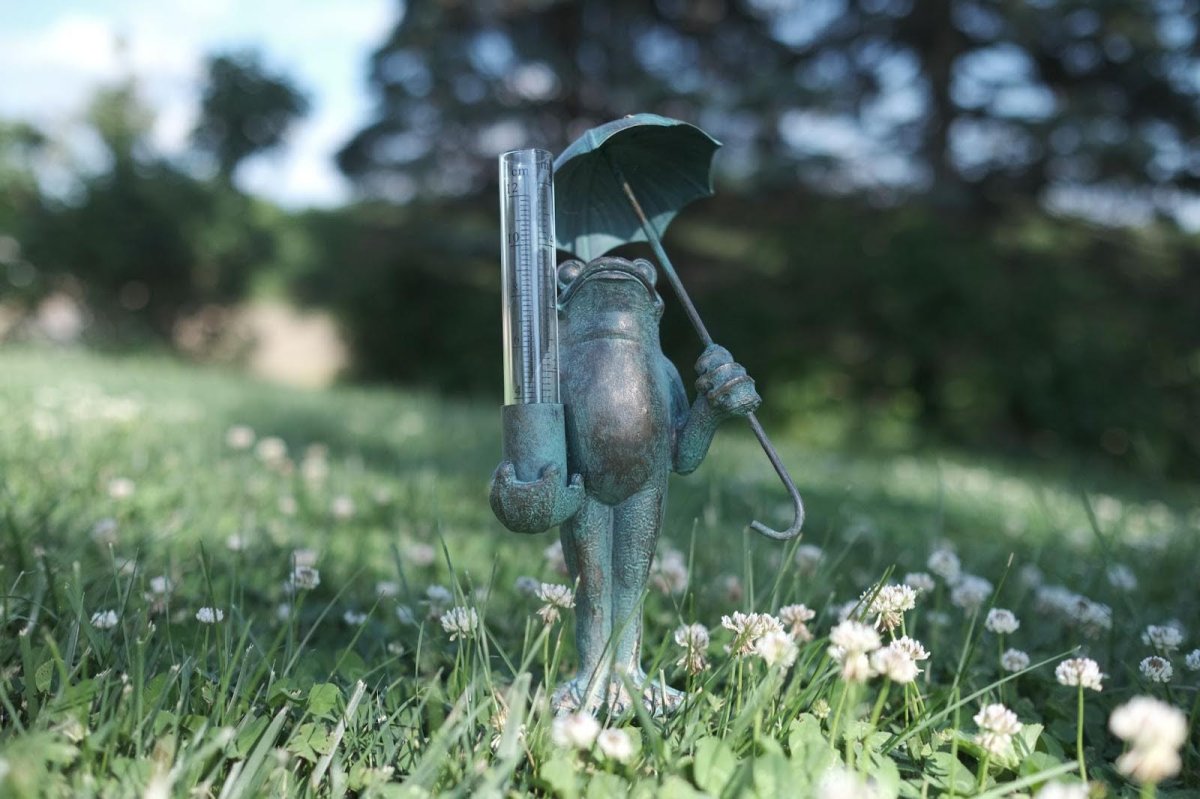
You may be wondering what constitutes a good-quality rain gauge. As with most products, your specific situation will impact the features and price range best suited for you. Consider the following criteria before buying.
Size
The height of a rain gauge typically ranges from 5 inches to 20 inches, while the diameter of its cylinder usually ranges from 2 inches to 8 inches. Typically, a larger cylinder can collect more rain, allowing for potentially more accurate readings.
For those who live in an area where it rains a lot, a larger rain gauge is a wise choice. Some models may double as snow gauges or come as part of an all-in-one weather station. However, if only rain-related data is needed, a more expensive, larger-scale gadget may not be necessary.
Type
Rain gauges come in analog and digital types. Analog gauges are the simplest and most affordable models on the market. They collect water in a tube; users must manually read and record the data every time it rains.
Digital or wireless rain gauges are much more self-reliant but come with a higher price tag. They transmit data to a unit inside the home or to a phone app. They may provide additional benefits, from monitoring the temperature to integrating other smart devices.
If that’s not enough, weather enthusiasts can opt for a weather station. This device offers a more complete picture, including not only rainfall data but also temperature, snowfall, barometric pressure, and more. Weather stations are the most expensive options on the market.
Collection Capacity
The importance of a rain gauge’s capacity depends on climate—whether it rains heavily or sporadically in a particular area—and on the tool’s intended purpose. Heavy and frequent rainfalls will require a larger rain collection tube. A rain gauge used for agricultural purposes requires more precise and long-term data compared to one used for gardening.
Most rain gauges collect up to 5 inches of rain, while larger models can collect up to 11 inches. A 5-inch rain gauge is usually plenty for an average yard or garden. Larger ones are better suited for farming.
Accuracy
An accurate rain gauge is generally important, although gardeners may require less precision than farmers. A wireless or digital rain gauge is more accurate than analog models, which may only bear markings in 1/4-inch intervals. However, some premium models are accurate to 1/100 of an inch.
A wider diameter usually leads to more accurate readings. A 4-inch rain gauge is appropriate for most uses, while 8 inches is what the National Oceanic and Atmospheric Administration employs for its data. To avoid evaporation before the water level can be measured, ultraviolet (UV) protection is another factor to consider.
In the end, accuracy also depends on placement. Nearby obstructions such as buildings or trees as well as wind and uneven terrain can all play a part in the readings’ exactitude. It is best to record measurements at the same time of day each time. For optimal accuracy, use multiple rain gauges placed in different areas of the yard.
Display
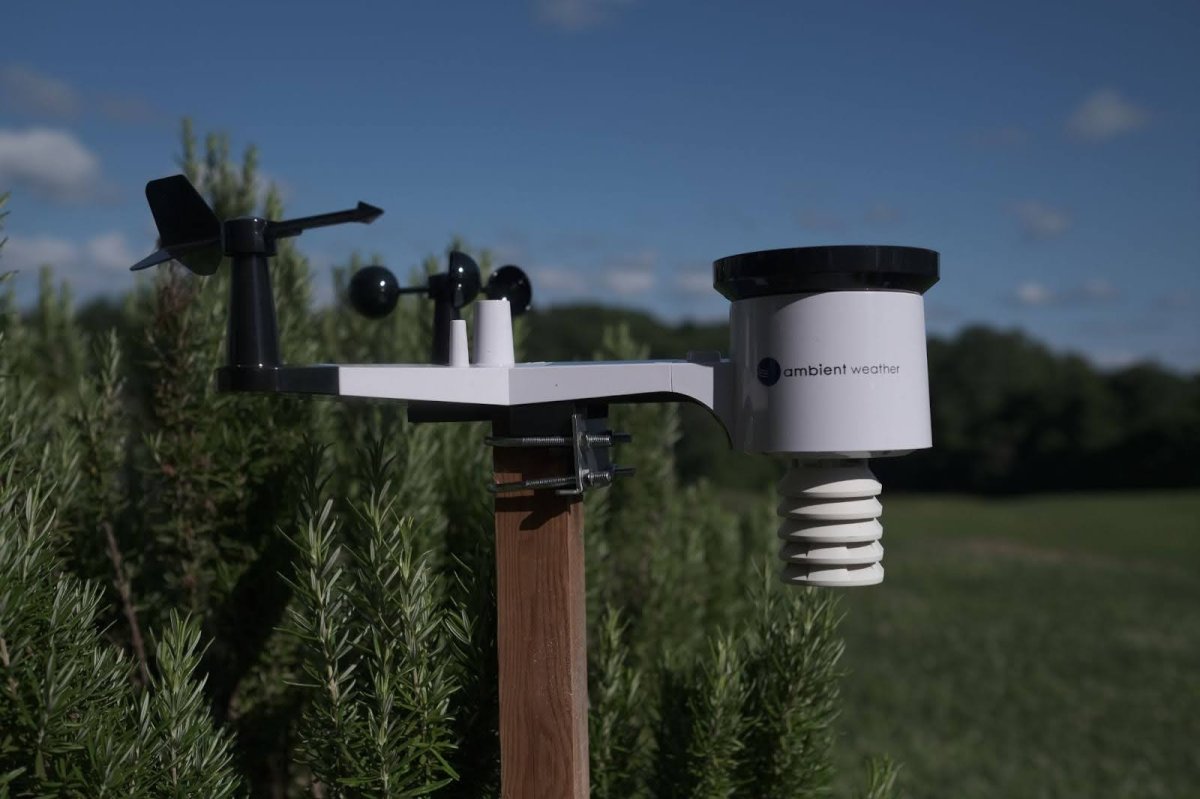
With analog types, the preference may be to look for large and clear markings that can be read from afar. Some designs bear properties that magnify the water level. Contrasting colors for the tube and markings also enhance ease of reading.
Markings that will neither erode nor disappear over time are signs of higher quality. With digital units, the data is sent either to a display screen kept indoors or to an app on a smartphone.
Installation
A rain gauge can go on a fence post, a patio railing, a mailbox, a plant pot, or even straight into the ground near plants. If the goal is to attach it to an existing structure, search for a model that comes with brackets and screws. Alternatively, look for a model with spikes to plant directly into the ground.
Keep in mind that a rain gauge needs to be placed in an unobstructed area. It should be installed at a reasonable distance from any buildings, trees, or overbearing bushes while still protected from heavy winds. Avoid placing it directly beneath a rain gutter to avoid the risk of runoff altering a reading. It is also ideal to place it 4 or 5 feet above the ground.
Digital gauges typically require more work to install than analog ones. But on the upside, they usually require low maintenance once set up. Plus, rain jackets can stay in the closet since all data is sent directly to a unit inside the home or an app on a smartphone.
FAQs
There may still be a few lingering questions about rain gauges, so the following will help. Here are answers to some of the most frequently asked questions about buying and using a rain gauge.
A rain gauge collects water into a graduated cylinder and measures precipitation over time. Analog types require users to record measurements manually and dump the water themselves.
Digital models require less maintenance; they record and transmit data to an indoor unit or to an app, and often include a self-draining feature.
If you are a gardener, a 5- or 6-inch capacity will likely suffice. If you live in a rainy climate or make a livelihood from farming, a cylinder capable of collecting between 7 and 11 inches of water is probably more suitable.
The best spot for a rain gauge is one that is free of obstructions, protected from the wind, and 5 feet above the ground. For accurate measurements, a level surface is also ideal.
Many rain gauges come with mounting brackets, for which you’ll need screws. They can then be mounted on fence posts, patio railings, or other elevated spots. Some models include spikes to secure them directly in the ground.
An analog gauge will require you to record measurements yourself. How often you check it depends on the accuracy and precision required. Digital or wireless gauges, on the other hand, record the data for you. You only need to check them for battery changes or occasional repairs.
When your rain gauge develops buildup, use gentle soap to clean it. The funnel and cylinders are sometimes removable for ease of cleaning. Steer clear of harsh chemicals, which may damage the glass or plastic. Always read the manufacturer’s directions before cleaning.
Meet the Tester
As a freelance writer, Jenn covers many different topics, including green buildings, natural and sustainable skin care products, natural health remedies, and disease prevention—and she absolutely loves learning about new things through her work. She is also knowledgeable in dentistry, especially preventive and restorative care—topics she has covered since she started as a writer in 2015.
When she has free time, she enjoys writing about her personal growth and health on her blog at thegreenwritingdesk.com.

